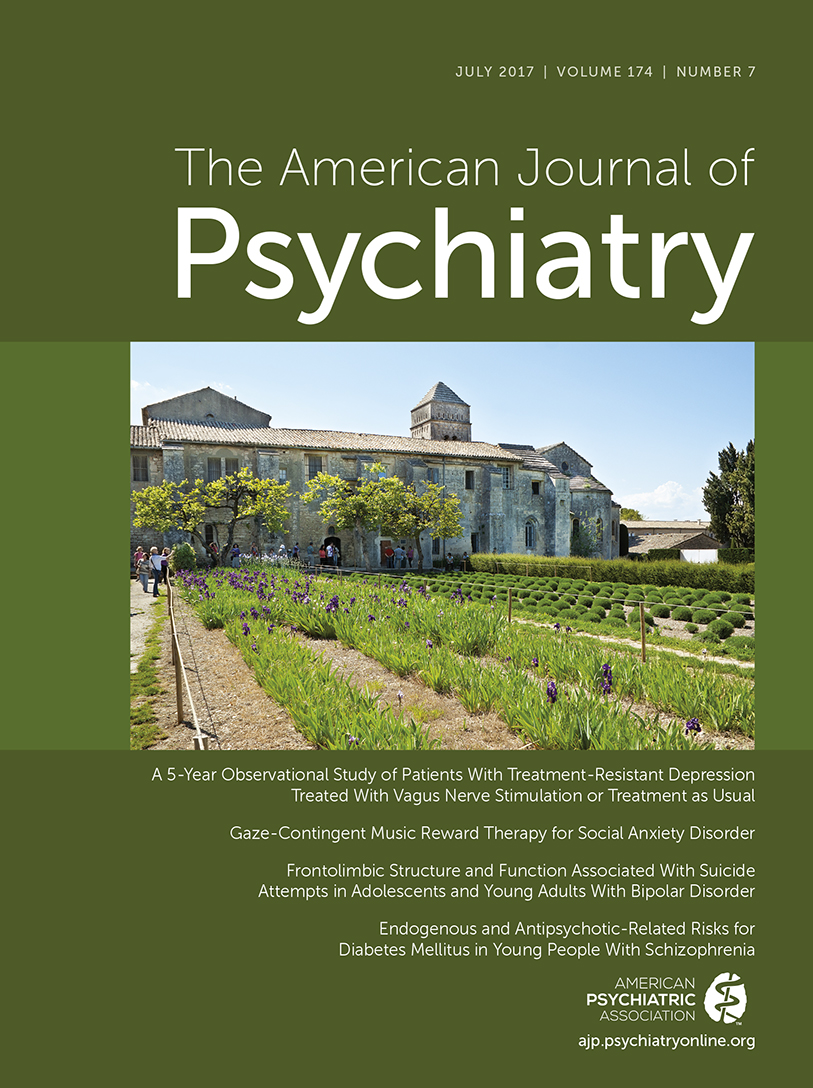Endogenous and Antipsychotic-Related Risks for Diabetes Mellitus in Young People With Schizophrenia: A Danish Population-Based Cohort Study
Abstract
Objective:
Diabetes mellitus contributes to excessive cardiovascular deaths and reduced life expectancy in schizophrenia. This population-based cohort study investigated the endogenous risk for diabetes in antipsychotic-naive schizophrenia and evaluated the risks added by starting antipsychotic treatment in people with schizophrenia.
Method:
The study followed all people born in Denmark on or after Jan. 1, 1977, until Jan. 1, 2013 (N=2,736,510). The Danish Psychiatric Central Research Register ascertained schizophrenia diagnoses. The Danish National Prescription Registry provided data on prescriptions of antipsychotics. Diabetes was ascertained from the Danish National Patient Register and Danish National Prescription Registry. The authors estimated the endogenous and antipsychotic-related risks for diabetes by using Cox proportional hazards regression models, while accounting for potential confounders.
Results:
Of the cohort members, 14,118 (0.52%) developed diabetes, and 8,945 (0.33%) developed schizophrenia during follow-up (49,582,279 person-years). The adjusted hazard ratio for diabetes was 3.07 (95% confidence interval [CI], 1.71–5.41) in antipsychotic-naive schizophrenia compared with the general population. The risk for diabetes after starting antipsychotic treatment was significantly higher (adjusted hazard ratio, 3.64; 95% CI, 1.95–6.82) than the risk in antipsychotic-naive schizophrenia, after adjustment for family history of diabetes and other potential confounders. First-line treatment with either first-generation antipsychotics (adjusted hazard ratio, 3.06; 95% CI, 1.32–7.05) or second-generation antipsychotics (adjusted hazard ratio, 3.44; 95% CI, 1.73–6.83) increased the risk for diabetes without a statistically significant difference. Appropriate sensitivity analyses limited to type 2 diabetes corroborated these results.
Conclusions:
Schizophrenia confers a high endogenous risk for diabetes, and the risk is further increased by both first-generation and second-generation antipsychotics. Early detection and effective treatment of diabetes should be an integral part of multidisciplinary management of schizophrenia regardless of antipsychotic drug exposure.



